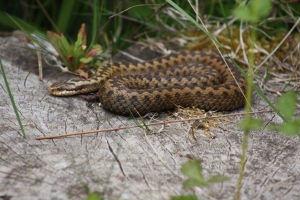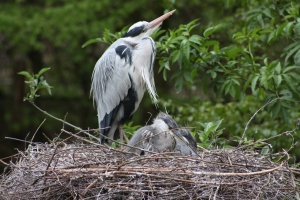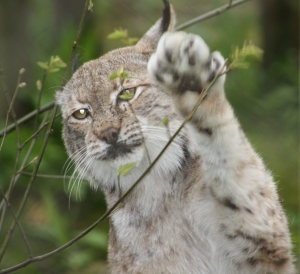For some time now I’ve been meaning to get down to the Wildwood Trust in Herne Bay, Kent. I am a big supporter of the British Wildlife Centre in Surrey, and also the Highland Wildlife Park in Scotland. The BWC is a wonderful showcase for animals that call our countryside home, and at the Highland Wildlife Park, you can see even more, including many that have since become geographically extinct here such as wolves and bison. You now also have the added bonus of seeing Amur tigers and polar bears. The Wildwood Trust has both past and present species on display, and is a great deal closer! With wolves, lynx, wild boar and even brown bears now calling Wildwood home, I couldn’t resist a visit, hoping for some photo opportunities and expecting the same kind of atmosphere as the BWC.
I was really impressed with the staff attitude and professionalism at Wildwood as soon as I arrived. I was escorted to my personal parking space by a string of on-duty attendants, and at the ticket kiosk I was talked through the projects my purchase and Gift Aid would help support. I couldn’t say why, but the sign noting Wildwood’s membership to BIAZA, the British & Irish Association of Zoos & Aquariums, set alarm bells ringing in my head. And it definitely feels more zoo-like than the BWC for instance.
I made my way past the rather shabby looking black stork exhibit to find myself in awe of a multitude of basking adders in a nearby enclosure. Out came the camera. And then I waited as a young family banged on the glass and watched as their young daughter tried to kick and scramble her way up and over the waist-height barrier. I then decided to get some photos whilst the agitated snakes slithered out and hissed at the disturbance. I don’t normally wish for the biting of children by venomous reptiles, but I was firmly on the side of the snakes at that moment.
I went on my way, enjoying the sight and sound of the cronking ravens a little further on. Then I rounded the corner and got a little excited as my traditional favourite, otters, were up next. The water was as still as a mill pond. A rather green and stagnant mill pond that is. I half expected the beast of boggy creek to start rising up from its depths at any moment. Curled up in its holt as it was, I didn’t blame the otter for not wanting to take a dip.
I stopped a bit further up at a bench overlooking a very pleasant meadow housing common cranes, grey herons, little egrets and barnacle geese. The herons had chicks, and were in the process of feeding the pterodactyl-like offspring. Another family soon joined me, but moved on quickly, describing the chicks as ugly and the other birds as boring. I sighed and moved on too, slowly, so as to keep my distance.
And so it continued. At the wild boar, I heard a disgruntled mum mumbling about them being just big pigs. At the wild horses, I watched people lean over the ‘caution, these horses may bite’ sign to stroke and pat the Konik ponies, only to see fingers snapped back with cries of pain and anguish when on the third or fourth offering of nothing but pinkies, the frustrated equines took a nibble – and it was just a nibble, a mere brush of their teeth from the sides of their mouths. Rather than a bite, most horse owners would recognise this as a cheeky sign of affection. But the throng of spectators were aghast. They stared at me as if I had just suggested we all vote UKIP when I pointed out the sign politely. Sorry, this is Herne Bay we’re talking about. They all stared at me as if I’d suggested we vote Lib Dem!
At the elk, a picnicking family ignored the world’s largest species of deer behind them and discussed their favourite chocolate bars instead. I have to admit I ignored the fallow deer, as nothing about their mud-strewn, torn up enclosure beckoned, especially when I have Knole Park on my doorstep.
I passed another stagnant looking otter pond, but found the mink curled up in his den rather cute and content. At the bears, a group of indignant onlookers moaned about their lack of visibility (rescue animals who are on trial display and only just getting used to visitors!), before giving up and howling madly at the wolves behind them. The wolves looked as impressed as I was.
I was however, really impressed and pleased with the lynx pair. They showed all the signs of happy, content cats and had a lovely, spacious enclosure. I even got some great shots of one enjoying a chicken dinner. So I was more than a little disappointed to get round the corner to find the Scottish wild cats pacing what was nothing more than a large aviary. Not exactly the best environment for an animal facing extinction.
The beavers were also avoiding the water, and I don’t want to make too much of that as I know many of the animals I’ve mentioned don’t mind the murkiness, and spend huge portions of their day sleeping. But in a captive environment, would it kill to have a running water feature? And curiously for a park named Wildwood and animals notorious for their love of timber, no logs to gnaw on in their rather barren enclosure. Why not give them a flooded meadow and real woodland to show how they change a landscape?
I don’t think Wildwood is a terrible place by any means, but I did feel so much more could be done for the animals to naturalise and make the most of their not-so natural environments, a rather odd state of affairs given the woodland setting. More than anything though, I was dismayed at what was really on display – people’s attitude! Moving around the park in disgruntled herds, they expected spectacle and sensation at every new exhibit. In many cases they didn’t even know what the animals were, nor did they care. They just wanted them to do ‘something’ for the brief few seconds they fixed eyes on them. And that’s when it dawned on me. It isn’t really animal lovers who go to zoos. Instead, I was surrounded by bored, fast-food-filled families that couldn’t tell the difference between a conservation programme and a circus. And they wanted the circus.
I think even without the bears, wolves and lynxes, you’ll still get more out of the British Wildlife Centre. The enclosures are nicer, the staff are more conservation orientated (and they’re not affiliated with BIAZA). The red squirrels at Wildwood for instance are housed in a small, dark enclosure. At the BWC, they have a huge, open exhibit they share with deer, wild birds and most importantly, people.
I think one of the things that saddened me most though when looking at the enclosures at Wildwood, was the realisation that people couldn’t be trusted. As I examined the walkways for the new bear enclosure and thought about the high barriers and lack of viewing ports I wondered why they couldn’t be more open. The reason? Because people would undoubtedly drop food or litter into the enclosure otherwise. At the end of the day, the truth is that animals don’t just need protection from human threats in their natural environment, but even more so in a captive one. And that’s just heart-breaking.



